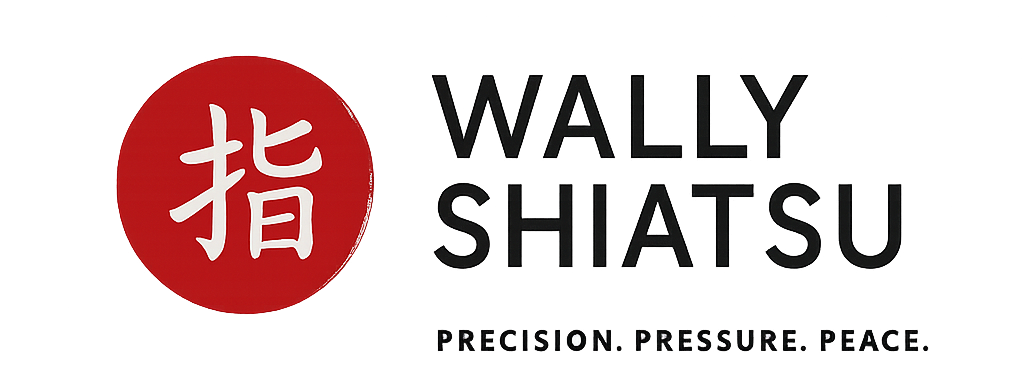Understanding Mindfulness in Massage Therapy
The Basics of Mindfulness
Mindfulness is about being present and aware of the moment. In massage therapy, it means focusing on the sensations and feelings during the session. This practice helps both the therapist and the client connect on a deeper level. By paying attention to breathing, touch, and body responses, they create a safe space for relaxation and healing. For more insights on the benefits of massage therapy, explore the incredible benefits of massage therapy.
Benefits of Mindfulness in Massage
Incorporating mindfulness into massage therapy offers several benefits:
| Benefit | Description |
|---|---|
| Enhanced Relaxation | Clients experience a deeper state of relaxation. |
| Improved Focus | Both therapist and client can concentrate better. |
| Emotional Release | Mindfulness allows clients to let go of stress. |
| Better Communication | It fosters a stronger bond between therapist and client. |
How Mindfulness Enhances Client Experience
When therapists practice mindfulness, they create a more meaningful experience for clients. For example, a therapist might guide the client to focus on their breath, helping them feel more grounded. This connection can lead to a more fulfilling massage. Clients often report feeling lighter and more at peace after a session that includes mindfulness. They find that it allows them to not only relax but also to reflect on their emotional state. This holistic approach makes the massage more than just a physical treatment; it becomes a journey towards wellness. To learn more about holistic approaches, check out our section on holistic wellness practices.
Techniques to Integrate Mindfulness into Massage Therapy Sessions
Mindful Breathing Practices
Mindful breathing is a powerful tool in massage therapy. It allows both the therapist and the client to connect on a deeper level. When the therapist encourages the client to focus on their breath, it helps them become more aware of their body. This practice can reduce anxiety and create a peaceful atmosphere.
Here are a few simple steps to follow:
- Inhale deeply through the nose for a count of four.
- Hold the breath for a count of four.
- Exhale slowly through the mouth for a count of six.
- Repeat this cycle a few times.
This technique not only calms the mind but also enhances the overall experience of the massage, contributing to the power of relaxation.
Using Meditation During Massage
Incorporating meditation during massage can elevate the session. It allows clients to let go of distractions and be present in the moment. A therapist can guide clients through a short meditation before starting the massage.
Consider the following approach:
- Set the Scene: Create a quiet and relaxing environment.
- Guide the Client: Ask them to close their eyes and focus on their breath.
- Introduce Visualization: Encourage them to picture a peaceful place, like a beach or a forest.
This method fosters a sense of calm that can significantly enhance the effectiveness of the massage.
Simple Mindfulness Exercises for Therapists
Therapists can also practice mindfulness to improve their skills. Here are some exercises they can do:
| Exercise | Description |
|---|---|
| Body Scan | Focus on each part of the body, noticing sensations. |
| Grounding Techniques | Feel the weight of the body against the ground. |
| Mindful Observations | Pay attention to the sounds and scents in the room. |
By engaging in these exercises, therapists can remain centered and present, which benefits both them and their clients.
The Role of Mindful Touch in Therapeutic Massage
Importance of Touch in Massage Therapy
Touch is a fundamental aspect of massage therapy. It serves as a bridge between the therapist and the client, promoting a sense of safety and comfort. When a therapist applies pressure to the body, they are not just manipulating muscles; they are fostering a connection that can ease stress and tension. Touch can convey empathy and understanding, allowing clients to feel valued and heard. For further insights into different massage techniques, visit exploring various massage techniques.
How Mindful Touch Affects Healing
Mindful touch goes beyond the physical. It plays a crucial role in healing by promoting relaxation and reducing anxiety. When therapists practice mindfulness, they become more aware of their movements and the client’s responses. This awareness can lead to a more effective treatment.
Research has shown that mindful touch can lower cortisol levels, the hormone linked to stress. Lowering these levels can lead to improved overall health. Here’s a table that highlights some of the benefits of mindful touch in massage therapy:
| Benefit | Description |
|---|---|
| Reduces Stress | Lowers cortisol levels, promoting relaxation. |
| Enhances Connection | Builds trust between therapist and client. |
| Improves Awareness | Increases sensitivity to client needs. |
| Promotes Healing | Encourages the body’s natural healing processes. |
Building a Body and Mind Connection Through Touch
Creating a connection between the body and mind is essential in massage therapy. Mindful touch helps clients become aware of their bodies. This awareness can lead to better understanding of their own needs and emotions.
For instance, a client may arrive feeling tense but, through mindful touch, they begin to recognize where they hold stress. As the therapist works, the client learns to release that tension. This process can be empowering, as clients discover their ability to influence their own well-being.
Enhancing Client Awareness During Sessions
Techniques to Encourage Client Presence
Massage therapists can play a pivotal role in helping clients stay present during sessions. One effective technique is to begin with a brief conversation. This helps clients express their needs and expectations, setting a clear intention for the session. Another approach is to use deep breathing exercises at the start. By guiding clients to take slow, deep breaths, they can become more in tune with their bodies.
Additionally, incorporating gentle reminders throughout the massage can be beneficial. Phrases like “focus on your breath” or “notice how your body feels” can gently nudge clients back to the present moment. These small prompts can make a significant difference in their overall experience.
The Impact of Awareness on Massage Outcomes
When clients are more aware during their sessions, the benefits can be profound. Increased awareness often leads to deeper relaxation and a greater sense of relief from tension. A study showed that clients who actively engaged in their sessions reported a 20% higher satisfaction rate compared to those who were less engaged.
Awareness also enhances the connection between the therapist and the client. When clients communicate their feelings, therapists can tailor their techniques to better meet individual needs. This collaborative approach not only improves outcomes but also fosters trust and comfort. For more on the role of a massage therapist, visit the massage therapist overview.
Strategies for Fostering Mindfulness in Clients
To integrate mindfulness into massage therapy sessions, therapists can employ several strategies:
| Strategy | Description |
|---|---|
| Guided Imagery | Encourage clients to visualize a peaceful scene. |
| Body Scanning | Guide clients to mentally check in with different body parts. |
| Mindful Listening | Use calming music and encourage silence during the session. |
| Post-Session Reflection | Invite clients to share their feelings and thoughts after the massage. |
These strategies can help clients connect with their bodies and emotions, enhancing the overall experience. By fostering mindfulness, therapists not only improve the effectiveness of their techniques but also create a more meaningful connection with their clients.
Holistic Approaches to Mindfulness in Massage
Integrating Mindfulness with Other Therapies
In the practice of massage therapy, mindfulness plays a crucial role. By focusing on the present moment, therapists can enhance the experience for their clients. Integrating mindfulness with other therapies, such as aromatherapy or reflexology, creates a more immersive experience. For example, when a therapist uses essential oils during a session, the calming scents can help clients feel more grounded. This combination allows for a deeper connection between the therapist and the client.
The Benefits of a Holistic Mindfulness Approach
Adopting a holistic mindfulness approach in massage therapy offers numerous advantages. Here are some key benefits:
- Enhanced Relaxation: Mindfulness encourages relaxation, which can lead to reduced stress levels.
- Improved Focus: Clients who practice mindfulness during sessions often experience increased mental clarity.
- Greater Emotional Awareness: Mindfulness can help clients become more aware of their emotions during therapy, allowing for better healing.
| Benefit | Description |
|---|---|
| Enhanced Relaxation | Reduces stress and promotes a sense of calm. |
| Improved Focus | Increases mental clarity and presence. |
| Greater Emotional Awareness | Helps clients recognize and process their feelings. |
Creating a Comprehensive Mindfulness Experience
To create a comprehensive mindfulness experience, therapists can follow these steps:
- Set the Atmosphere: Use soft lighting and calming music to create a serene environment.
- Encourage Deep Breathing: Guide clients in deep breathing exercises before starting the massage.
- Use Mindful Touch: Pay attention to the pressure and rhythm of each stroke, allowing clients to feel each movement.
By incorporating these elements, therapists can foster a space where clients feel safe and supported, allowing for a more profound healing journey.
Challenges and Solutions in Integrating Mindfulness
Common Barriers to Mindfulness in Massage
Integrating mindfulness into massage therapy can present several challenges. Many therapists face distractions during sessions. These can be external, like noise, or internal, such as racing thoughts. Additionally, therapists may feel pressure to complete treatments quickly, making it hard to focus on the present moment.
Another barrier is the lack of training in mindfulness practices. While many therapists possess excellent skills in massage techniques, they might not have the tools to incorporate mindfulness effectively. This gap can lead to missed opportunities for deeper client connections.
Overcoming Obstacles to Mindfulness Practices
To tackle these barriers, therapists can adopt several strategies. First, creating a calm environment is essential. This can involve using soft music, dim lighting, or even aromatherapy to foster a peaceful atmosphere.
Second, therapists can practice mindfulness themselves. By taking a few moments to breathe deeply and center themselves before each session, they can better focus on their clients. This practice not only enhances their own experience but also positively impacts the client’s session.
Lastly, seeking additional training in mindfulness can be beneficial. Workshops or courses specifically designed for massage therapists can provide valuable insights and techniques. For more resources, check out the American Massage Therapy Association’s resources.
Tips for Successful Integration of Mindfulness
Here are some practical tips for therapists looking to integrate mindfulness into their sessions:
- Set Intentions: Before each session, take a moment to set clear intentions. This helps in maintaining focus throughout the treatment.
- Mindful Touch: Pay attention to the sensations during the massage. Focus on how the client’s body responds to each touch.
- Breath Awareness: Encourage clients to focus on their breathing. This can help them relax and stay present during the session.
- Regular Reflection: After sessions, take time to reflect on what worked and what didn’t. This can help in fine-tuning mindfulness practices.
| Tips for Mindfulness Integration | Description |
|---|---|
| Set Intentions | Create a focused mindset before the session. |
| Mindful Touch | Concentrate on the sensations experienced during the massage. |
| Breath Awareness | Guide clients to focus on their breath for relaxation. |
| Regular Reflection | Reflect on sessions to improve mindfulness practices. |


